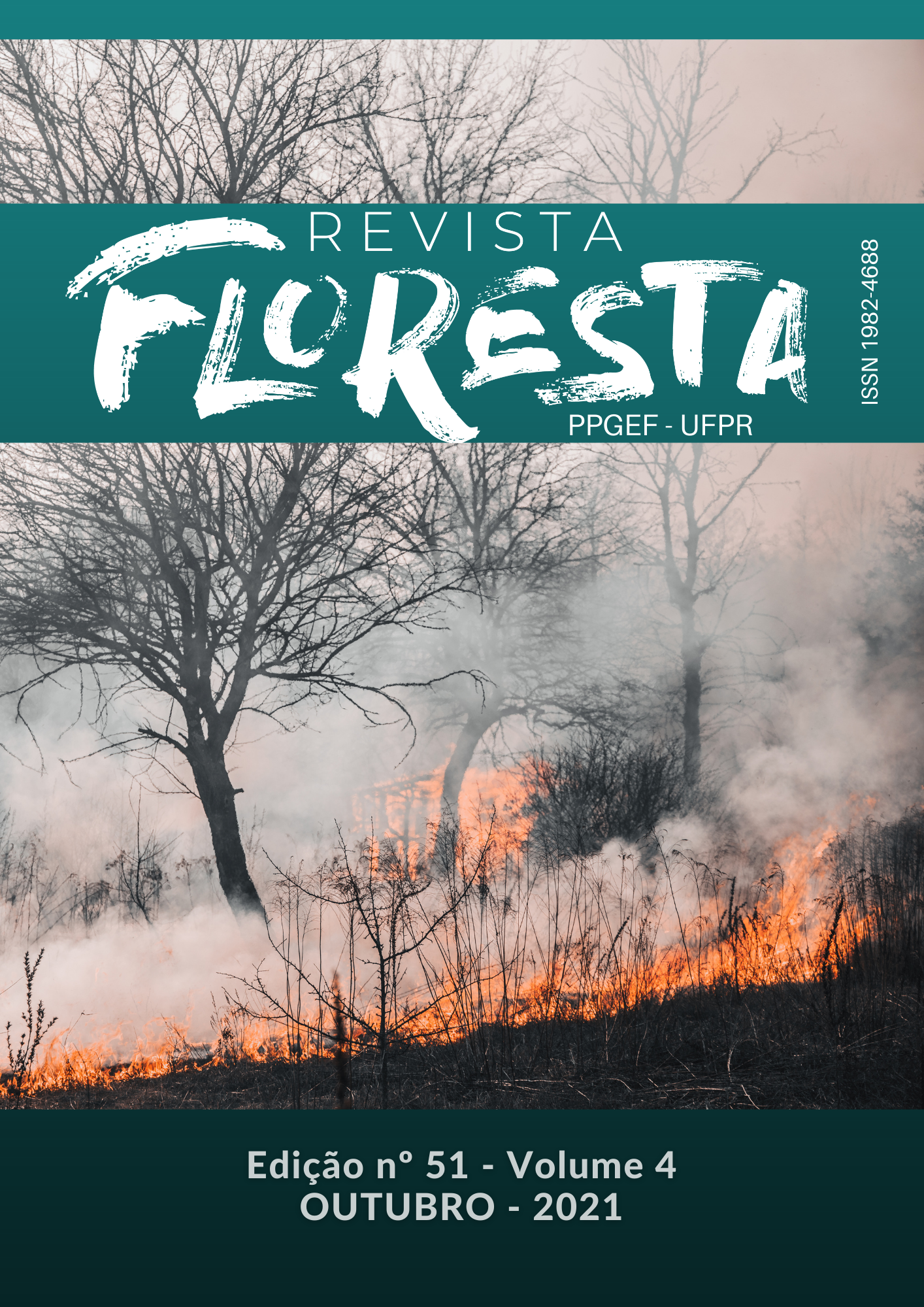PLANT DIVERSITY ASSOCIATED WITH PRODUCTIVE BRAZIL NUT TREES IN THE LEADING PRODUCING REGIONS IN THE AMAZONAS
DOI:
https://doi.org/10.5380/rf.v51i4.74299Palavras-chave:
Brazilian nuts, dissimilarity, floristic composition, nMDSResumo
Bertholletia excelsa, known as Brazil nut tree, is a species that produces a fruit collected by traditional populations that trade their almonds, as an alternative in the composition of the family income. The plant diversity associated with productive Brazil nut trees was evaluated by comparing the floristic differences between and within six Brazil nut tree plots. The experiment was conducted in the leading producing regions of Amazonas: (1) Piagaçu Purus/Anori Sustainable Development Reserve, (2) Jutica/Tefé Farm, (3) Jatuarana/Manicoré Community, (4) Gostoso/Amaturá Farm, (5) Mufuá/Lábrea Community, and, (6) Unini River/Barcelos Extractive Reserve. The floristic differences were analyzed using the Non-Metric Multidimensional Scaling - nMDS, with validation of the structural arrangement of the plots, through analysis of multivariate variance (Permanova-Adonis at 5% probability). All individuals with DBH ≥ 10 cm, neighbors to the selected Brazil nut trees, were identified in 15 circular plots of 15 meters radius in each Brazil nut tree. The plots were installed around Brazil nut trees selected based on their fruit production class (5 high, 5 medium, and 5 low productivity). It was registered 3,039 individuals in which Jatuarana showed the largest number of individuals (577). The forest environments showed great floristic diversity, Shannon-Weaver index between 3.65 and 4.19; however, these values were not statistically significant (Kruskal Wallis) among the sites. In the context of production classes, there was no pattern of clustering plots of the same class. Significant floristic differences were observed between the six locations, according to permanova / adonis p-value = 0.001.
Downloads
Publicado
Como Citar
Edição
Seção
Licença
Direitos Autorais para artigos publicados nesta revista são do autor, com direitos de primeira publicação para a revista. Em virtude da aparecerem nesta revista de acesso público, os artigos são de uso gratuito, com atribuições próprias, em aplicações educacionais e não-comerciais.A revista, seguindo a recomendações do movimento Acesso Aberto, proporciona acesso publico a todo o seu conteudo, seguindo o principio de que tornar gratuito o acesso a pesquisas gera um maior intrcambio global de conhecimento.
Conteúdos do periódico licenciados sob uma CC BY-NC-SA 4.0



